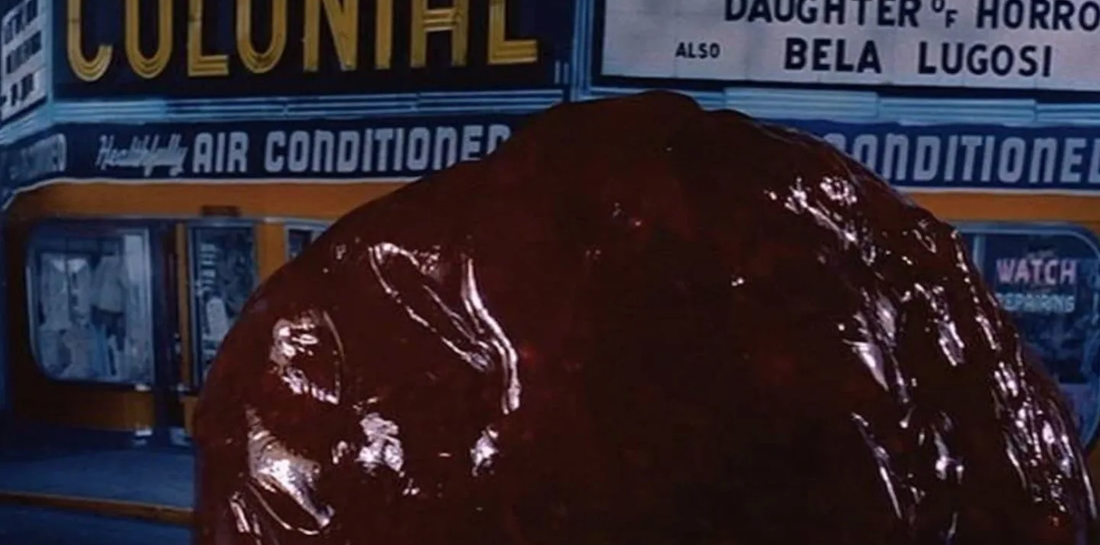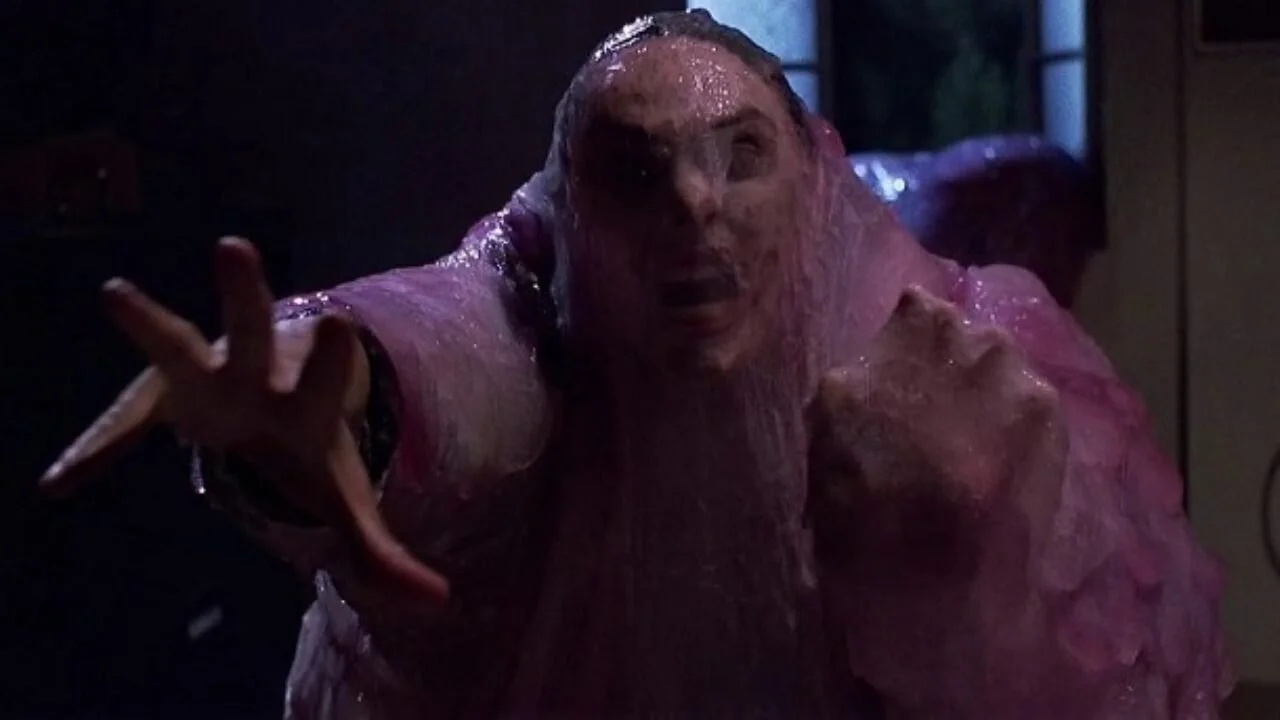Slimes Through The Times
Mid-September of 1958 people queued along the front of their local movie theater in anticipation of a rather curious picture. The project was initially considered a b-movie by producers and unimpressive to critics but was quickly catapulted to the status of featured film thanks to its popularity amongst audiences. As the sun lowered beyond the horizon, people began entering the cinema to stock up on snacks and find their seats. As they hurried in, above their heads hung a brightly lit marquee that read—NOW SHOWING: THE BLOB. About an hour and a half later, folks filed out of the theater as street lamps highlighted their way home to gab about the unexpected classic. For once the main antagonist wasn’t a man donning a monster suit. This creature was an amorphous being who mindlessly consumed any and everything around it. The entire runtime was dedicated to echoing the idea of the blob as an unstoppable, insatiable force. Almost Lovecraftian in nature, there was no way to contain or completely eliminate the monster, and it only grew with each victim it claimed. Across America kids, teens, and young adults everywhere were sensationalized by THE BLOB. As the years passed, the movie would easily cement its place among the horror greats, with some arguing its impact as one of the most noteworthy creature features of all time. Influential and inspiring, neither director Irvin Yeaworth nor Russel Doughten could have ever grasped just how much THE BLOB would influence the world of entertainment.
The early ‘70s: Dave Arneson was a young college student who loved playing tabletop games with his friends. Known to be quite the stickler for historicity, he’d research real-life battles and skirmishes to curate and modify war games, along with the inspiration he drew from his beloved kitschy horror movies and fantasy novels, making them all the more entertaining for himself and his peers. Arneson had even spent hours reworking Chainmail (a tabletop game fleshed out by Gary Gygax and his friend Jeff Perren) to play with his buddies. It wasn’t long before Arneson took his modified version of Chainmail to the popular tabletop gaming convention, GenCon. Arneson’s tweaks and alterations blew Gygax away with its bombastic play style that encouraged imagination by giving the players as much control as humanly possible. The two agreed to collaborate to create a game that could stand alone, something that would incorporate and improve Arneson’s inventive ideas. These changes came with several more pages of rules, an endless catalogue of monsters, and various settings people and their characters could play in, around, and through. Thus the first role-playing game, Dungeons and Dragons, had been born.
The lengthy list of monsters and fiends that existed within the first edition were a testament to the reverence Gygax and Arenson held for the movies, shows, and books they’d cherished growing up. With an ingenious mixture of characters plucked from mythos, cinema, and comics, the two men had bridged many gaps between the different pillars of nerd culture. Though creatures like orcs and trolls terrorized the Forgotten Realms, no monster was more iconic, more important, more historically significant to role-playing games as the incomparable slime.
Akin to a primordial goo, slime grows and festers in underground caverns and dark dungeons. The ooze dissolves any organic and metallic materials it comes into contact with. Unable to move and with no consciousness or ability to communicate, the substance serves as an unfortunate obstruction for any party unlucky enough to cross its path. Should one be exposed, the slime will begin to slowly envelope the individual as the acid it secretes stings and burns the victim, eventually succumbing to the creature and being digested into the conglomerate. The only way to stop this agonizing process and to effectively “kill” slime is with extreme heat or cold (or a trusty healing spell should it be applicable to one’s campaign party). However, if even the smallest amount remains after an attempted extermination, the slime will fully regenerate after a while. As a party delves deeper underground, the greater and denser the colonies of slime become, making subterranean journeys all the more perilous for any daring players brave enough to traverse through the daunting environment.
The success of Dungeons and Dragons also meant people were exposed to different genres and themes outside of their typical bubbles of interest. Fantasy geeks kindled an affinity for sci-fi, horror movie buffs started reading Lovecraft, and tabletop addicts were turned on to video gaming. Using a computerized version of the traditional pencil and paper method of navigating through an RPG, many video games of the late 70s across the 80s began emulating settings, situations, and even monsters popularized by D&D. 1986’s Dragon Quest skyrocketed the relevance of RPG’s in the video gaming sphere and made sure to take as many iconic features of tabletop games along for the ride. Sure there’d been other RPGs, but they tended to be geared towards people who’d already fallen in love with the genre. No, Dragon Quest was so much more, it was a game that bridged the gap between both newcomers and veterans of the fantastical world of role-playing. This alliance of old and new, of borrowing bits and pieces of collaborated work, and creating a complex tapestry of what is, effectively, a decades long group project would once again redefine a major section of the entertainment industry in a way that can only be truly scaled with the context of hindsight.
North America, 1989. A parent buys their child a copy of Dragon Quest and can’t help but reminisce on their own upbringing from Saturday morning cartoons, to sneaking into the local theater to catch a glimpse of the latest horror flick, to long nights campaigning with friends. Intrigued, the parent watches their kid boot up the family NES and begin to play. It is both comforting and novel as the player is tasked with defeating the Dragon Lord by the king and sets out into the great unknown (after a quick stop to a local merchant, of course.) The parent smiles while watching their child’s reaction, awe and wonder illuminating their face. It isn’t long after the player leaves the town that the music suddenly changes from being light and upbeat to charged with fervor, a monster! The child smiles, happy to be quickly put into action, while their parent initially recoils with astonishment before flashing a wide grin, beaming with nostalgia. The game’s text reads, “A slime draws near! Command?”





